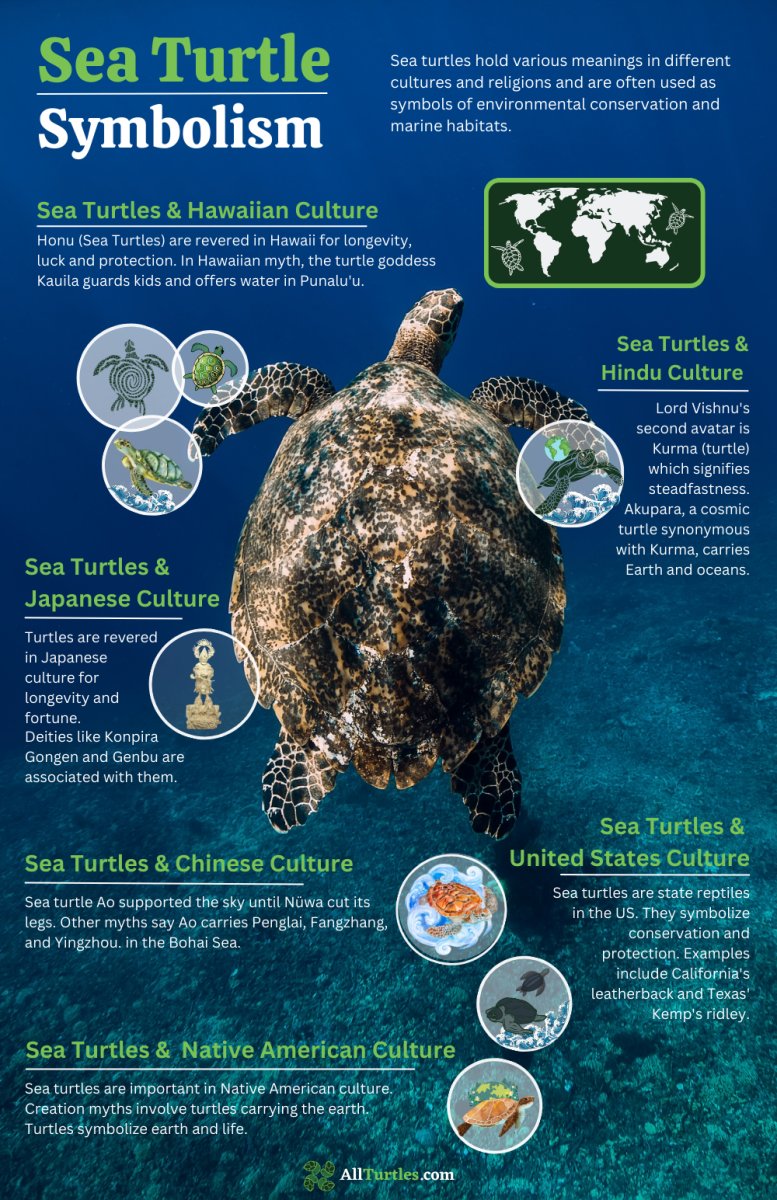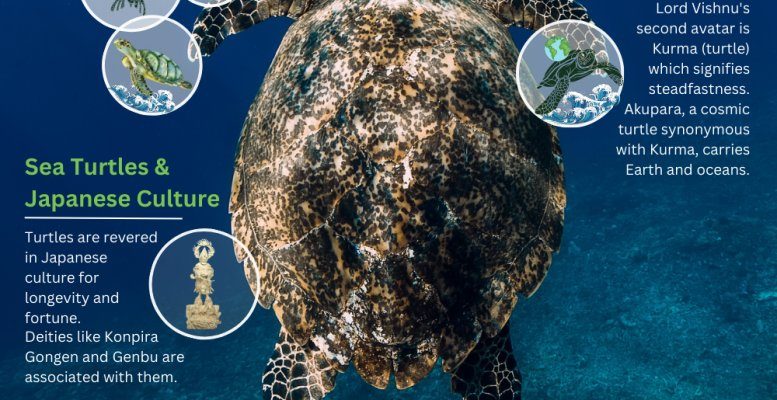
Sea turtles represent different things depending on where you are. They often symbolize wisdom, longevity, and endurance. But with such deep admiration comes plenty of misconceptions. Some people view them as symbols of good luck, while others might think they are simply slow and lazy. Let’s dive into the world of sea turtles and explore some of the fascinating myths and cultural beliefs that have blossomed over time.
The Significance of Sea Turtles in Various Cultures
Throughout history, sea turtles have held significant places in various cultures, often embodying wisdom and strength. For instance, in Hawaiian culture, the *honu*, or green sea turtle, is revered as a symbol of good luck and fertility. Locals believe that their appearance signals a connection to ancestors and the spirit world. Similarly, many Native American tribes view turtles as sacred, considering them to be a bridge between earth and water.
In some cultures, sea turtles are also considered to be protectors. For example, in Chinese mythology, the turtle is associated with the cosmic world. It’s said to carry the weight of the heavens on its back, representing stability and endurance. Such beliefs highlight how integral sea turtles are to the cultural narratives that shape people’s lives, serving as reminders of connection and balance within nature.
Myth 1: Sea Turtles are Lazy
One common myth about sea turtles is that they are lazy creatures. People often think of them as slow and unmotivated, drifting aimlessly through the ocean. But here’s the thing: sea turtles are actually quite the opposite. They are highly adapted for life in the water and can swim at impressive speeds when needed. For instance, the leatherback turtle can reach speeds of up to 22 miles per hour when threatened.
You might be wondering why this myth persists. It’s likely because of their calm demeanor as they bask on sandy beaches or float on the surface. But this relaxed behavior is more about conserving energy than being lazy. Sea turtles migrate long distances for food and nesting, demonstrating their endurance and commitment to survival. So, next time someone mentions sea turtles being lazy, you can confidently debunk that myth!
Myth 2: Sea Turtles are Immortal
Another popular myth is that sea turtles are immortal. While they do have long lifespans—some species can live up to 100 years—this doesn’t mean they are invincible. In fact, sea turtles face many threats throughout their lives, including habitat destruction, pollution, and climate change. Each of these factors can significantly affect their chances of survival.
Let me explain further. Sea turtles might seem eternal due to their slow maturity and impressive age, but they are vulnerable. For instance, many young sea turtles fall prey to predators like birds and fish. By understanding their journey, we can better appreciate their resilience and the challenges they face. This myth about immortality, while romantic, overlooks the reality of the dangers that threaten these fascinating creatures.
Cultural Beliefs: Guardians of the Ocean
In many cultures, sea turtles are viewed as guardians of the ocean. For instance, in some African cultures, they are believed to be protectors of the sea, helping to maintain balance in aquatic ecosystems. This belief stems from their role in marine environments, where they help maintain seagrass beds and coral reefs by grazing on them.
This protective role has inspired stories that emphasize the importance of conserving marine life. When people see sea turtles as guardians, they often feel a responsibility to protect them and their habitats. This cultural perspective can drive conservation efforts and create a deeper appreciation for the delicate balance of marine ecosystems. By embracing these beliefs, we play a part in ensuring that future generations can experience the wonder of sea turtles.
Myth 3: All Sea Turtles Are Endangered
While it’s true that many sea turtle species are threatened, not all of them are classified as endangered. There are seven species of sea turtles, and their conservation status varies. For example, the green sea turtle is currently listed as endangered, while the loggerhead sea turtle is classified as vulnerable.
Here’s the thing: understanding the specific conservation status of each species is critical. Some populations are recovering thanks to concerted conservation efforts, such as protected nesting areas and reduced fishing bycatch. However, conservation is an ongoing process, and it’s essential to stay informed about the status of these animals. A common misconception can lead to apathy, but knowledge can inspire action.
Unique Myths from Around the World
Sea turtles have inspired unique myths beyond the common ones we’ve discussed. For instance, in Maori culture, sea turtles are believed to be the reincarnation of ancestors. This connection with the past emphasizes the belief in the cyclical nature of life and the importance of respecting the environment.
In some Pacific Island cultures, sea turtles are thought to bring forth rain. This belief likely arises from their deep ties to the ocean, as their presence contributes to the overall health of marine ecosystems, which can affect weather patterns. These stories enrich our understanding of how humans interact with sea turtles and the ocean, highlighting the interconnectedness of life.
The Future of Sea Turtle Conservation
As we explore myths and cultural beliefs about sea turtles, it’s crucial to consider their future. Many organizations are working tirelessly to protect sea turtles and their habitats. Efforts include beach clean-ups, nesting site protections, and educational programs aimed at raising awareness.
You might be wondering what you can do to help. Simple actions, like reducing plastic use and supporting local conservation efforts, can make a big difference. Every little bit counts when it comes to ensuring these magnificent creatures thrive in the wild. By actively engaging in conservation, we can help dispel myths and honor the deep cultural significance of sea turtles.
In conclusion, sea turtles are more than just remarkable creatures; they are woven into the fabric of human culture and myth. Understanding these stories not only enhances our appreciation for them but also emphasizes the need for their protection. So, the next time you think of sea turtles, remember their wisdom, resilience, and the myths that connect us all to the ocean.

